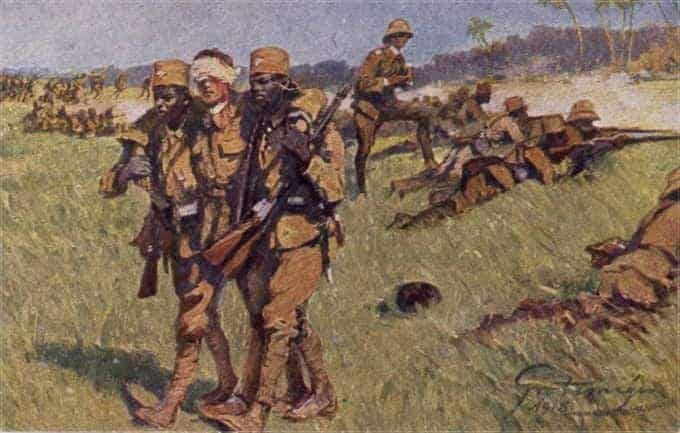On this day in history, South African forces occupy Swakopmund, a port in the German colony of Southwest Africa, now known as Namibia. This was their first success in their invasion of the German colony. In 1914 the South Africa Prime Minister pledged full support to Britain and her Empire in their war against the Central Powers. This was a move that was very unpopular in South Africa. The majority of the white population were Boers (also known as Afrikaner) did not want such a policy.
They had fought the British in the Boer War, that only ended in 1902. The Boers had control of two gold-rich Republics. The British wanted to secure these areas. This led to a bitter war, at first the British fared badly but their superior numbers led to their ultimate victory. Many Boers were still angry about their defeat and especially the way that the British strategy of settling Boers forcefully in detention camps.

Under the terms of the Treaty of Vereeniging, that ended the war in 1902, the Boer republics were given the status of self-governing colonies within the British Empire. These small Republics were later incorporated into the Union of South Africa. Botha became the first head of government of the new Union. He and the Minister of Defense Jan Smuts both former Boer commanders were looking to extend their country’s interests and even extend its influence.
They believed that the bet policy was to support the British in their hour of need. This led to resignations in the military and many Boers revolted in protest. Many had been appalled by Botha’s declaration of war on Germany, a nation that had helped them in their struggles with the British. The Boer Revolt was crushed by Christmas 1914. This freed up the forces of South Africa and allowed them to invade the German colony of South-West Africa. Smuts directed an army of 6,000 men in the conquest of the German South-West Africa.
The colony was mainly desert but it was widely believed to be mineral-rich. The campaign lasted six months and the South Africans easily overcame the German colonial troops. The Imperial German troops surrendered on July 1915. At the Versailles Peace Conference Smuts and Botha claimed that South Africa should be given a mandate over the former German colony of Southwest Africa. This allowed them to become the de-factor rulers of the former German colony. South African mining companies were allowed to exploit the rich mineral resources of the area. South-West Africa became known as Namibia.
In the wake of Second World War, the South African government refused to give Namibia its independence. Many Namibians resented this and they formed SWAPO, a guerrilla organization. They fought a guerrilla war against the occupying South African army for many decades. It was only in 1990 that the South Africans withdrew from the former German colony.

